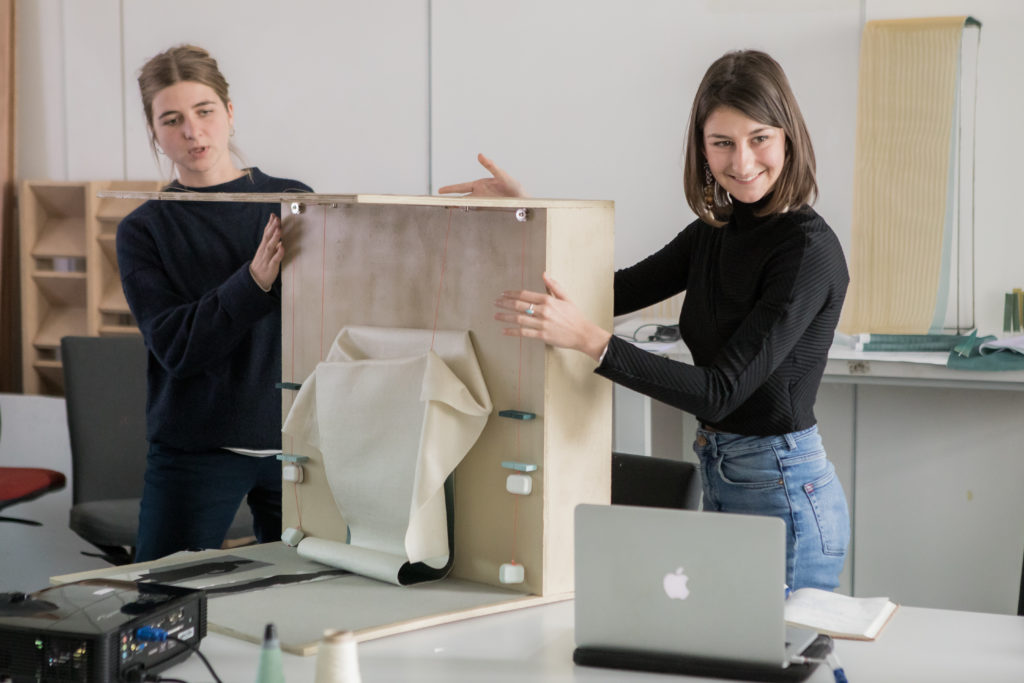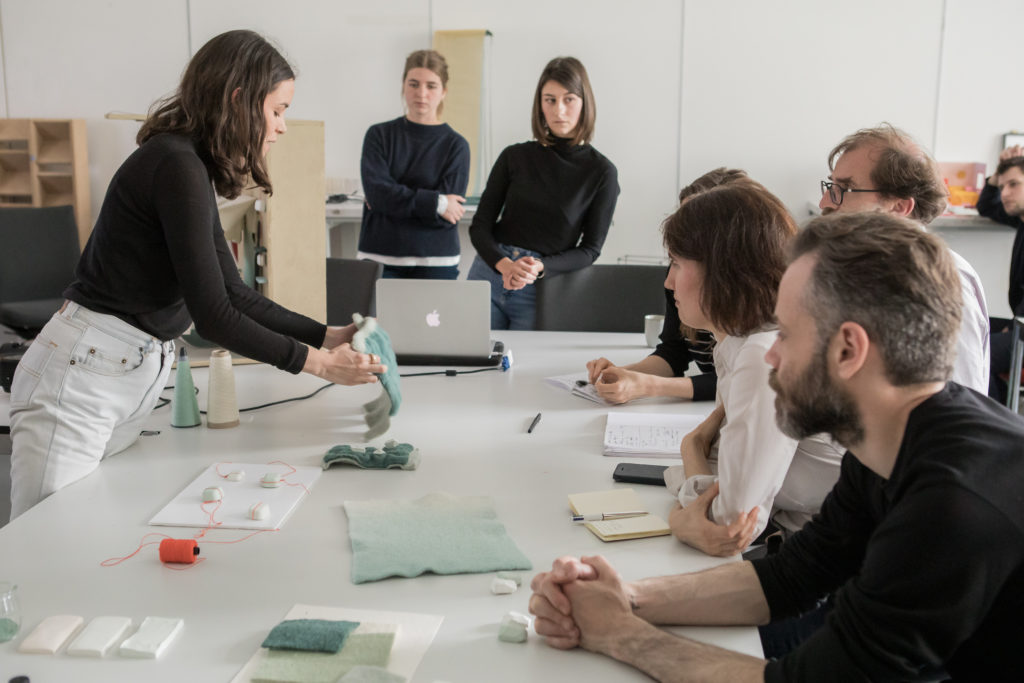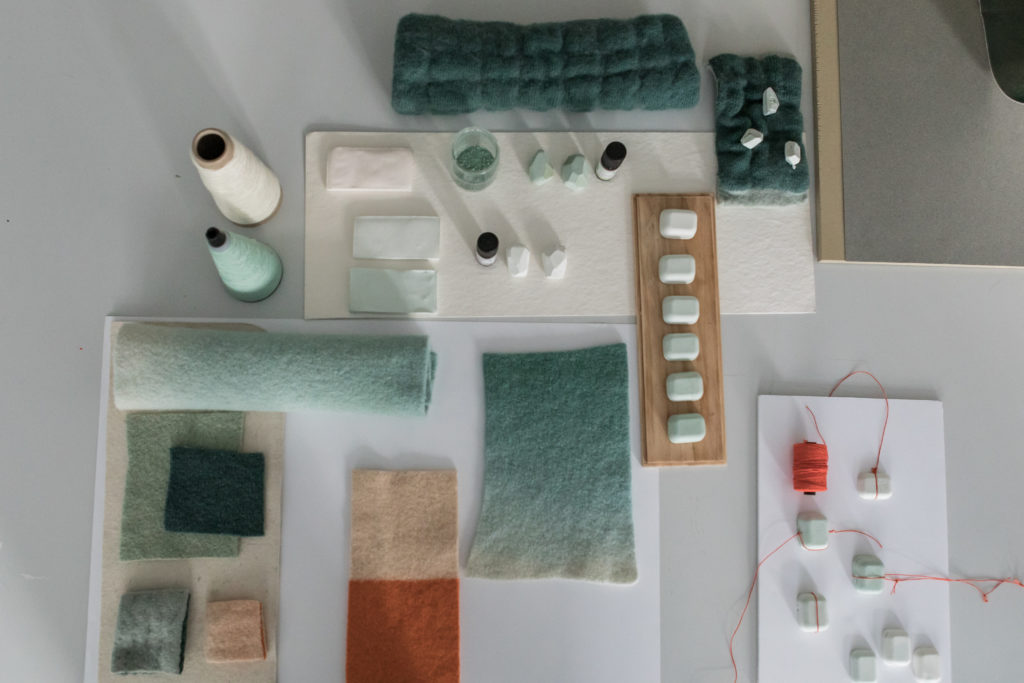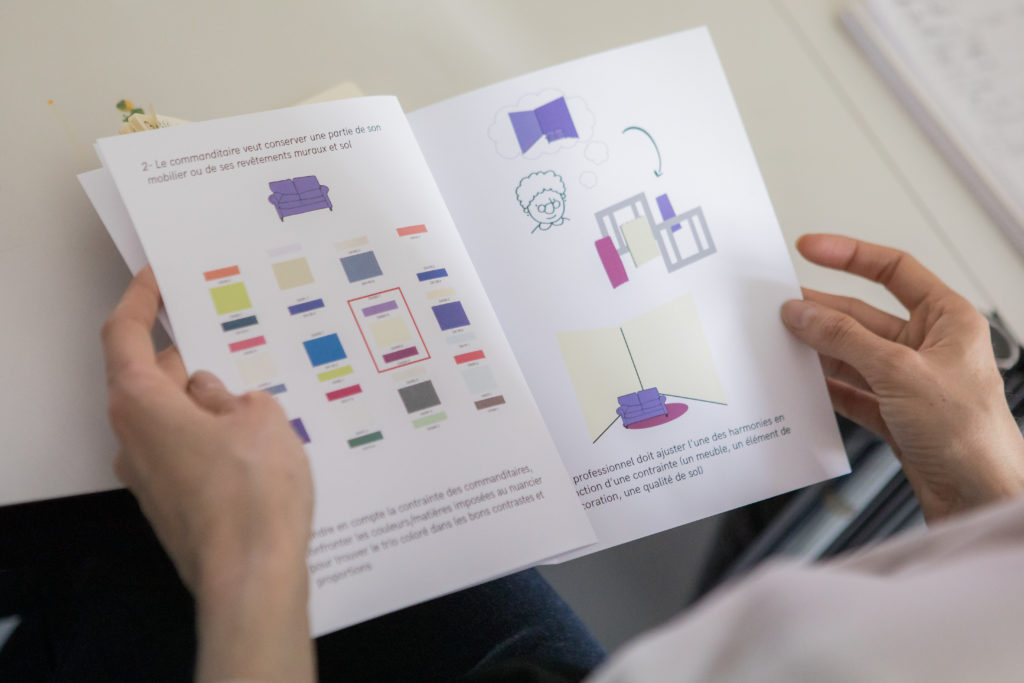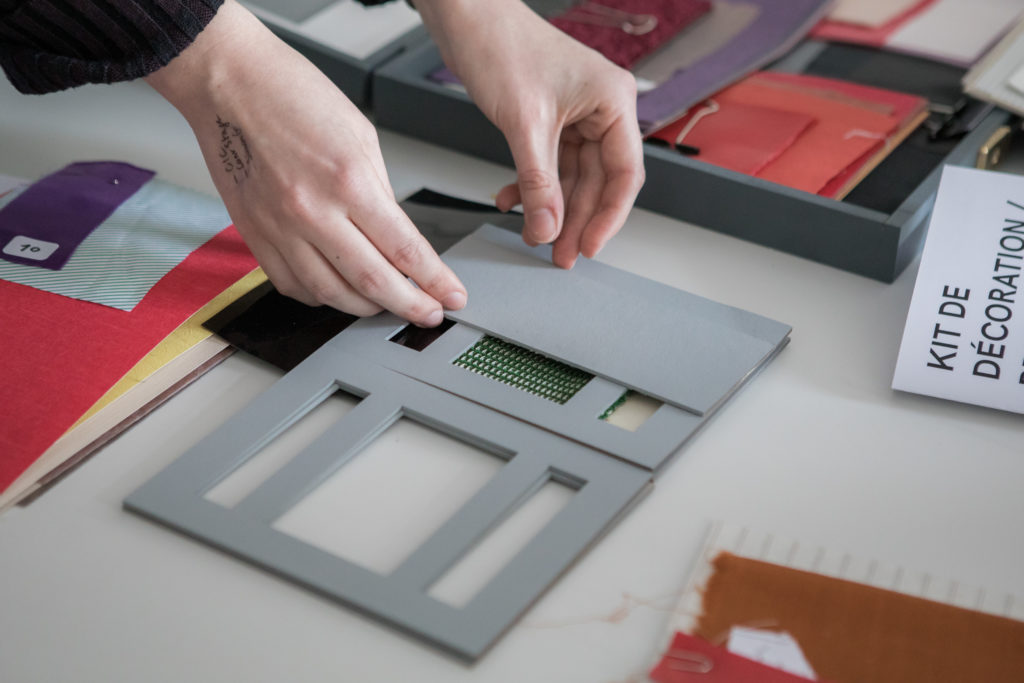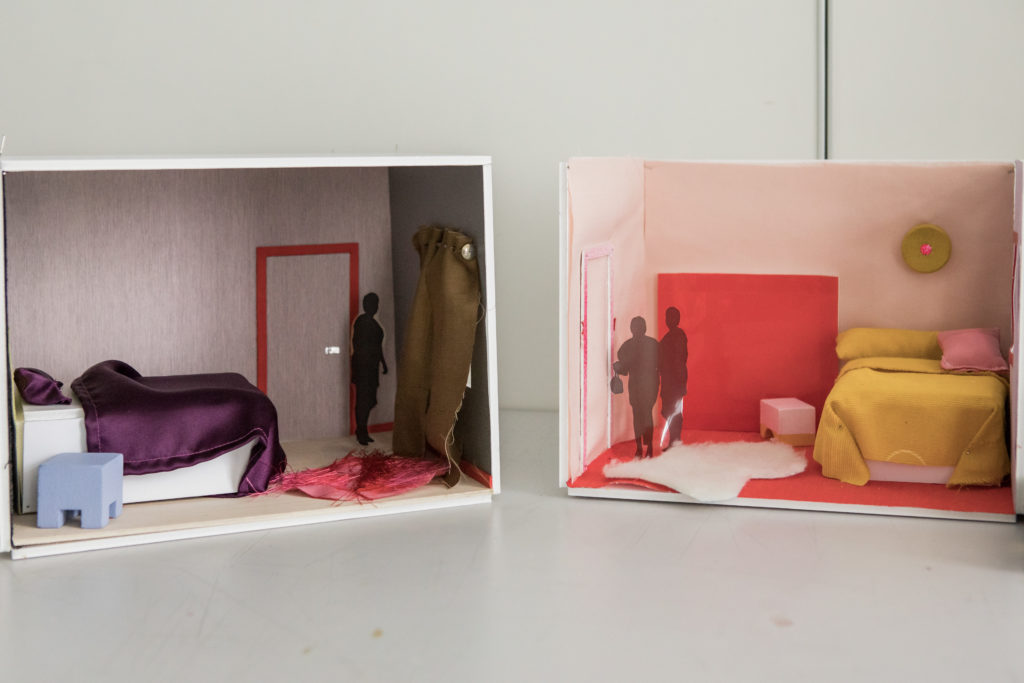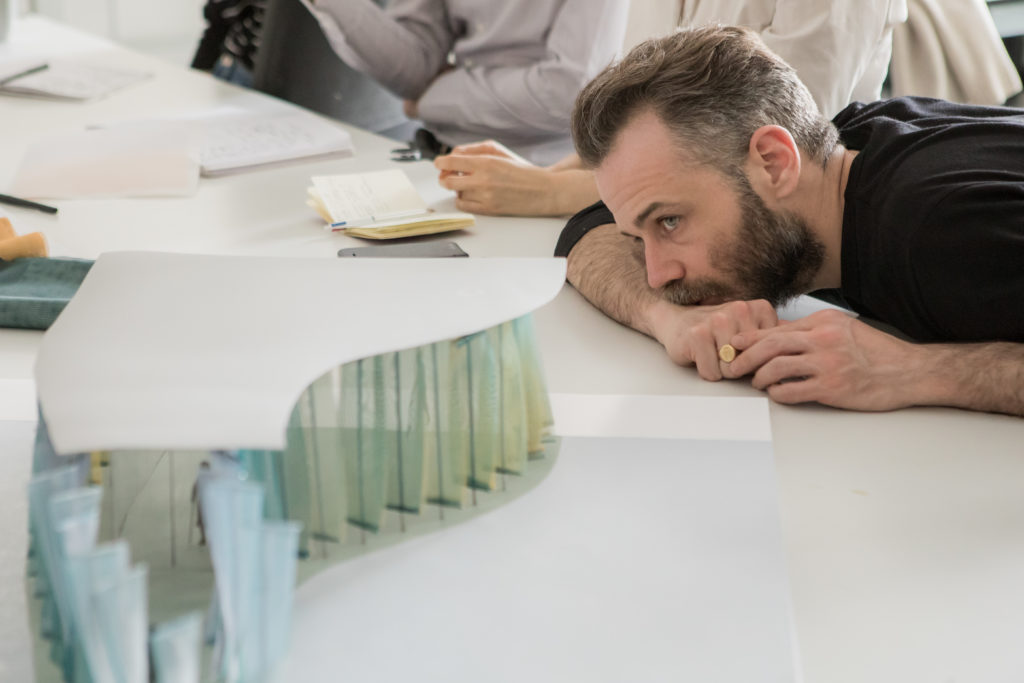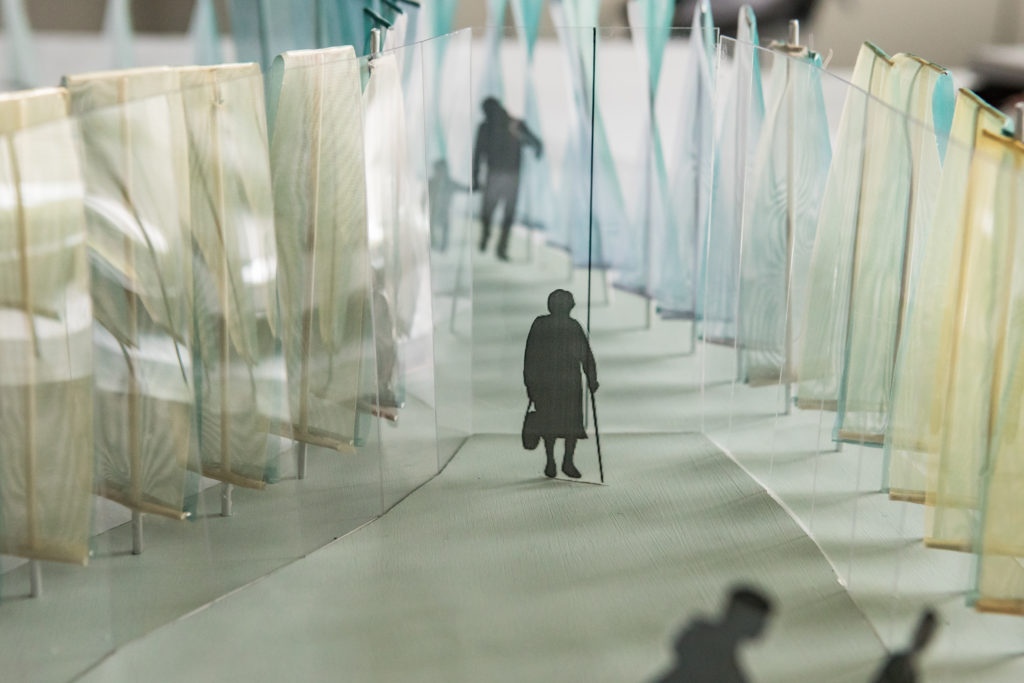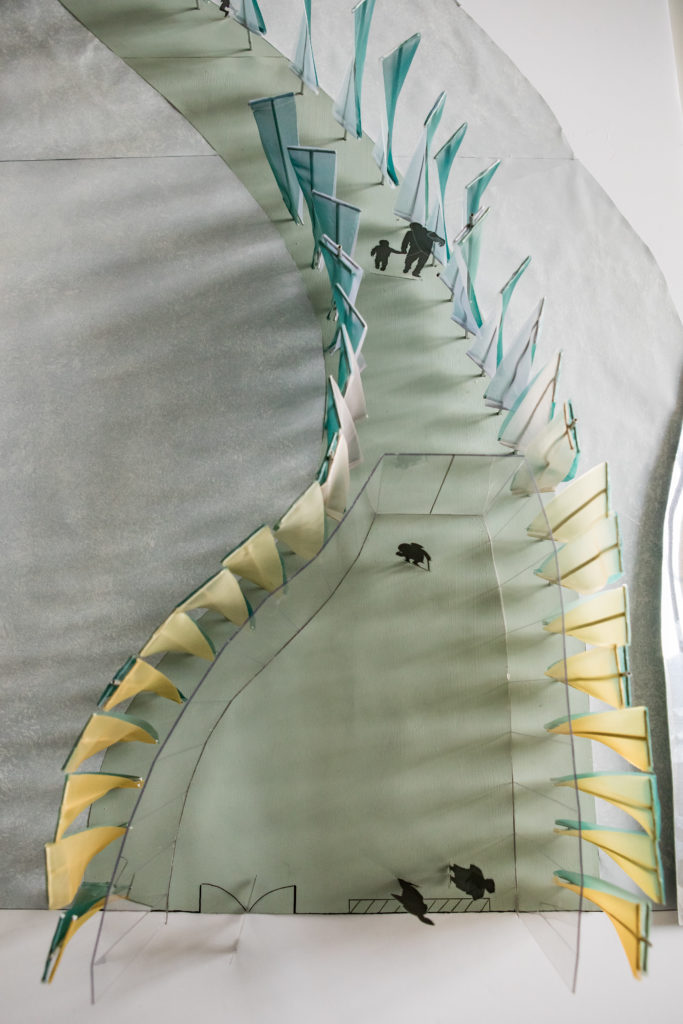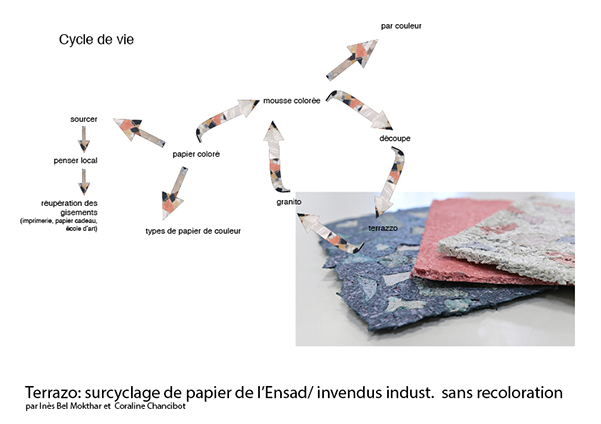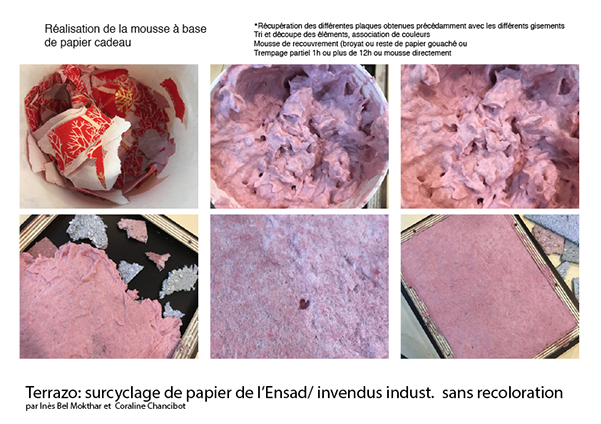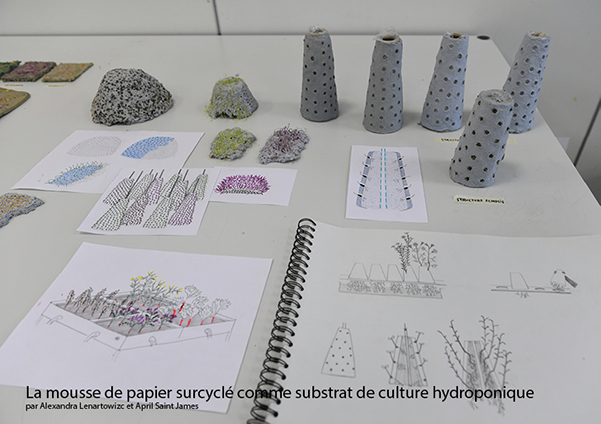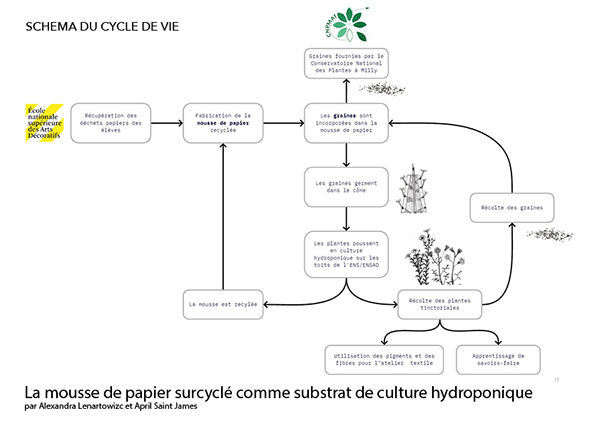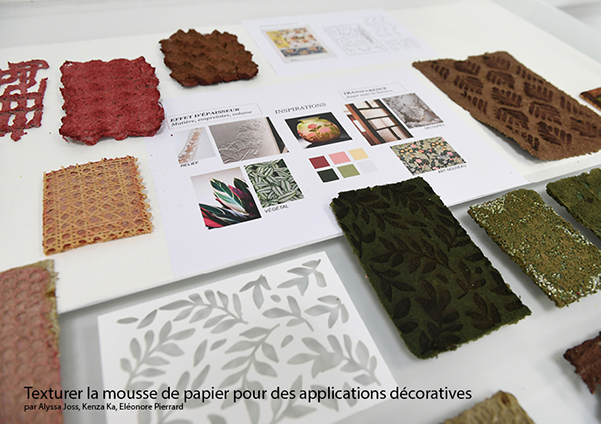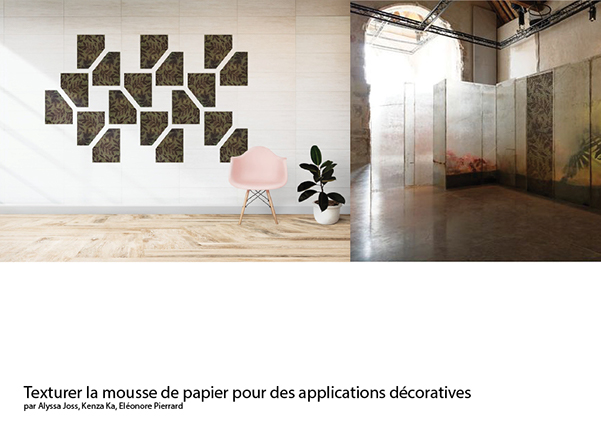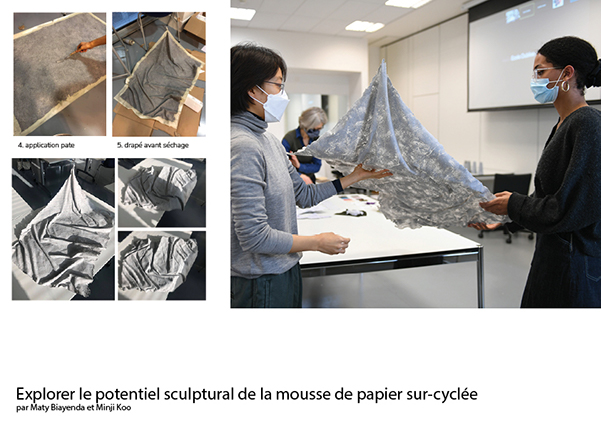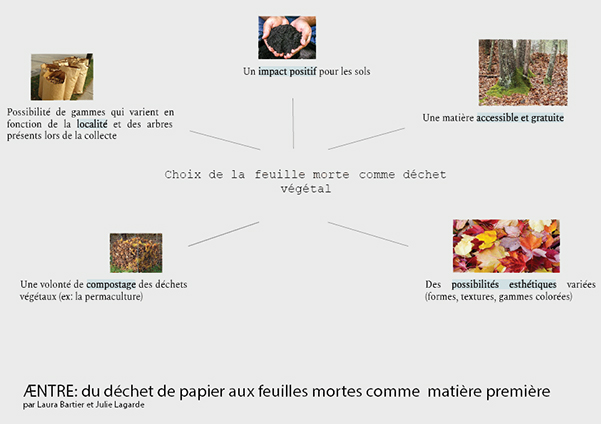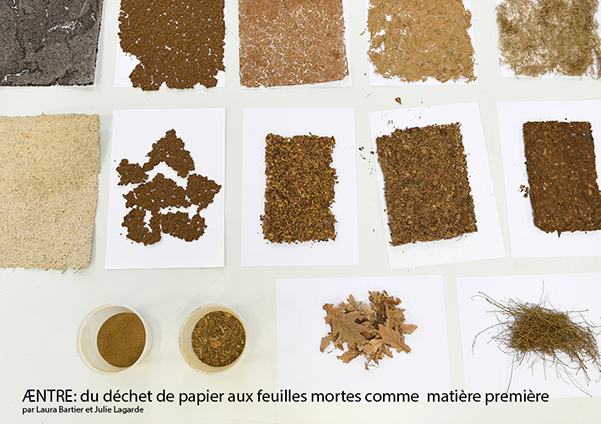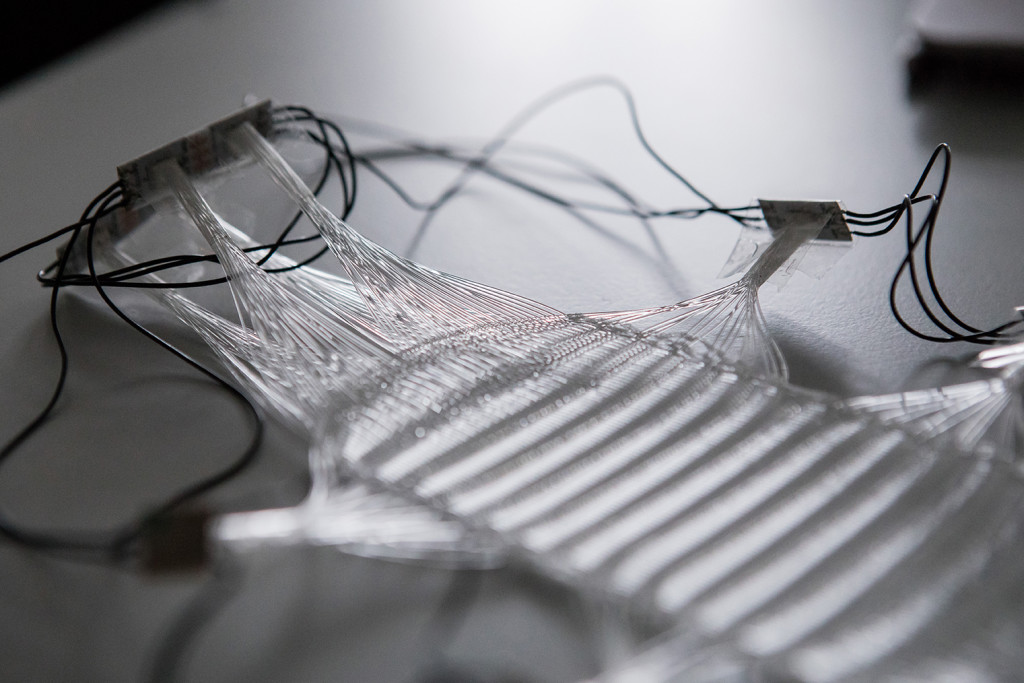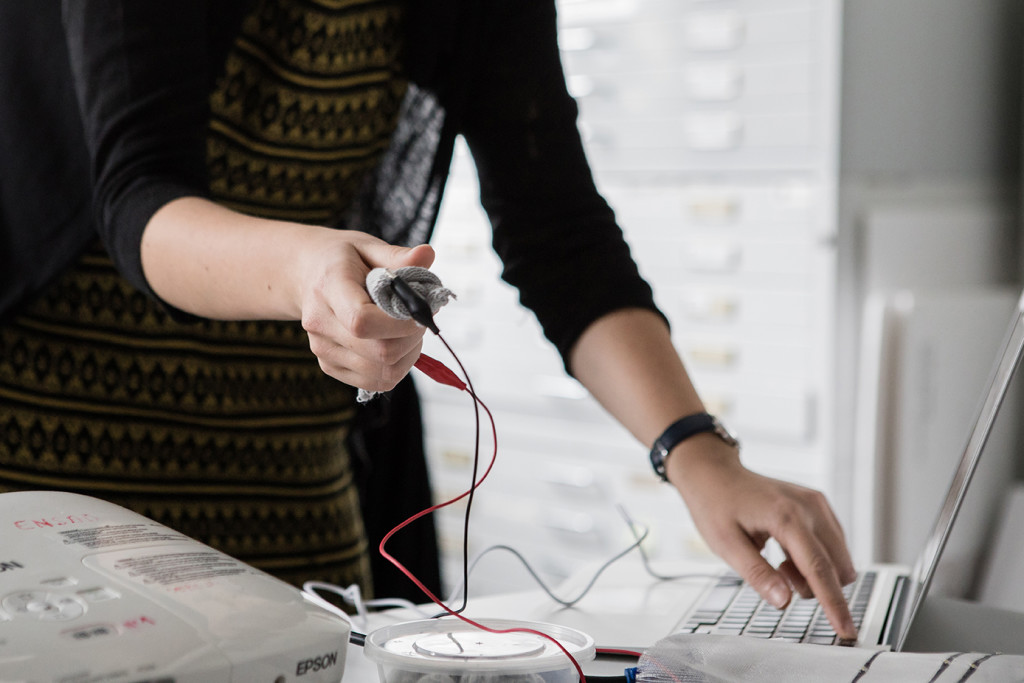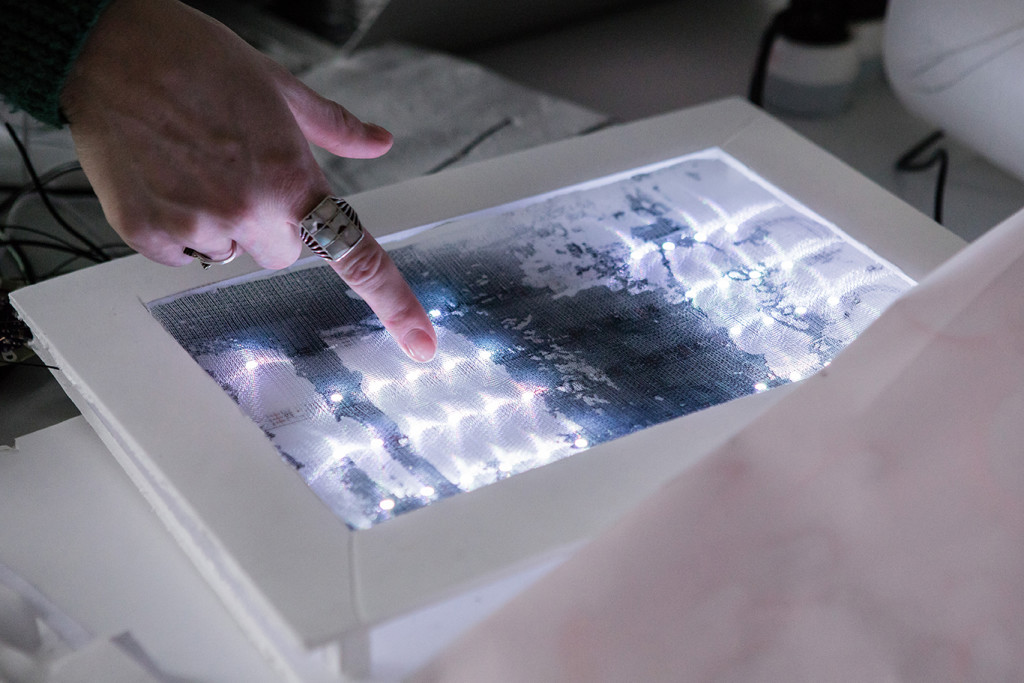Biocalcifiedtextile architecture
a 2-week project in collaboration with Bastian Beyer and Daniel Suarez from the Matters of Activity cluster, Humboldt University, Berlin, developed in the framework of the 2022 « matérialités futures » course, 4DTM, Ecole des Arts Déco.
Biocalcified textile architecture is a practice-based and design-led research course sitting at the intersection of textile design, architecture and microbiology. It asks how textile designers can work with calcifying bacteria to design bio-based solidified textiles for architectural expressions. Calcifying bacteria are micro-organisms known for their ability to precipitate calcite and solidify sand given a calcium source and urea through the process of microbiologically-induced calcite precipitation or biological cementation. Also known as biocalcification, this process is used by engineers in the consolidation and repair of sand, brick and concrete structures while rare incursions in the design community relate essentially to sand or concrete-based architectural and urban design demonstrators. Here building on the pioneering Column project by Bastian Beyer and Daniel Suarez, we expand the vocabulary of what a textile-based biocalcified architecture can be with textile design crafts and sensitivity.
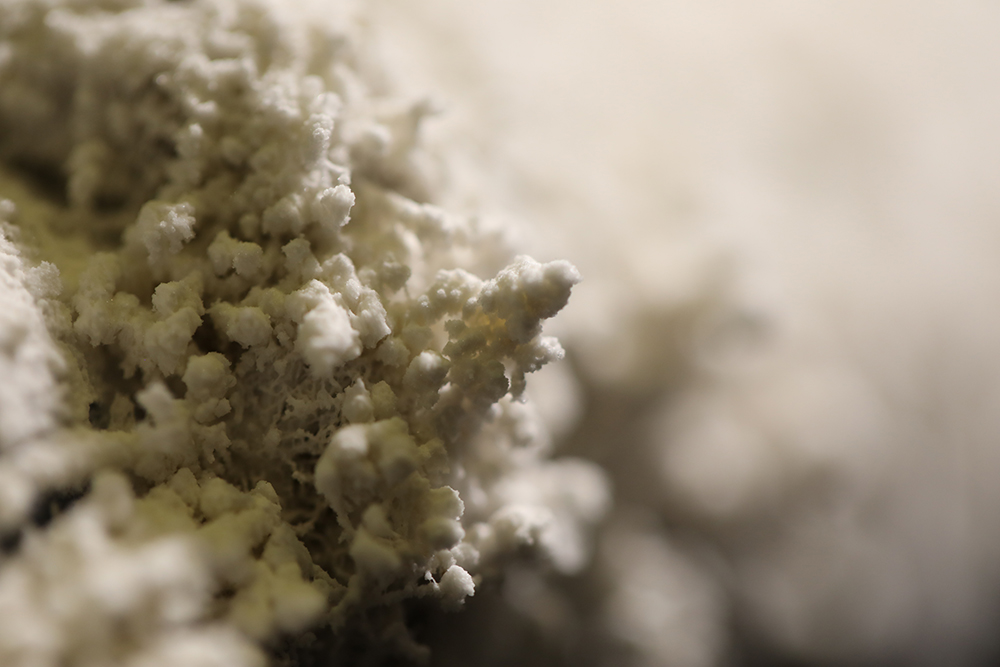
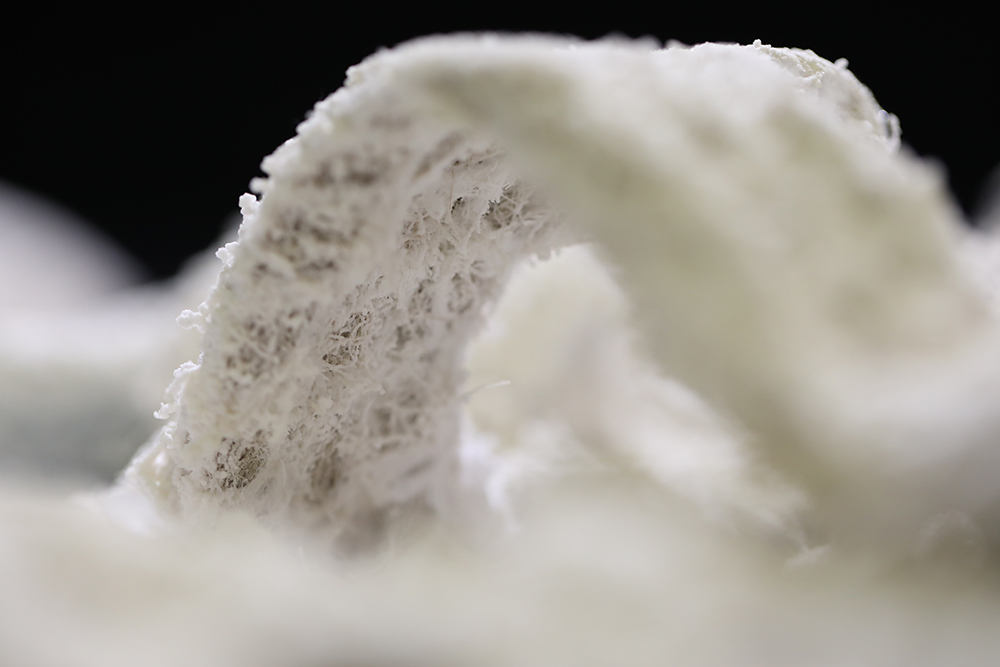
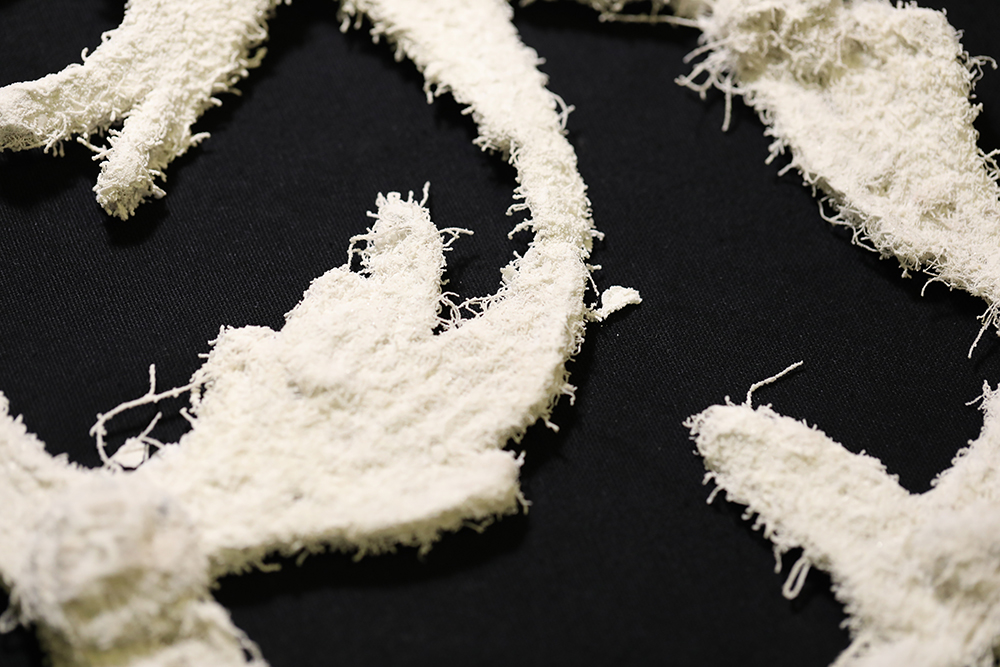

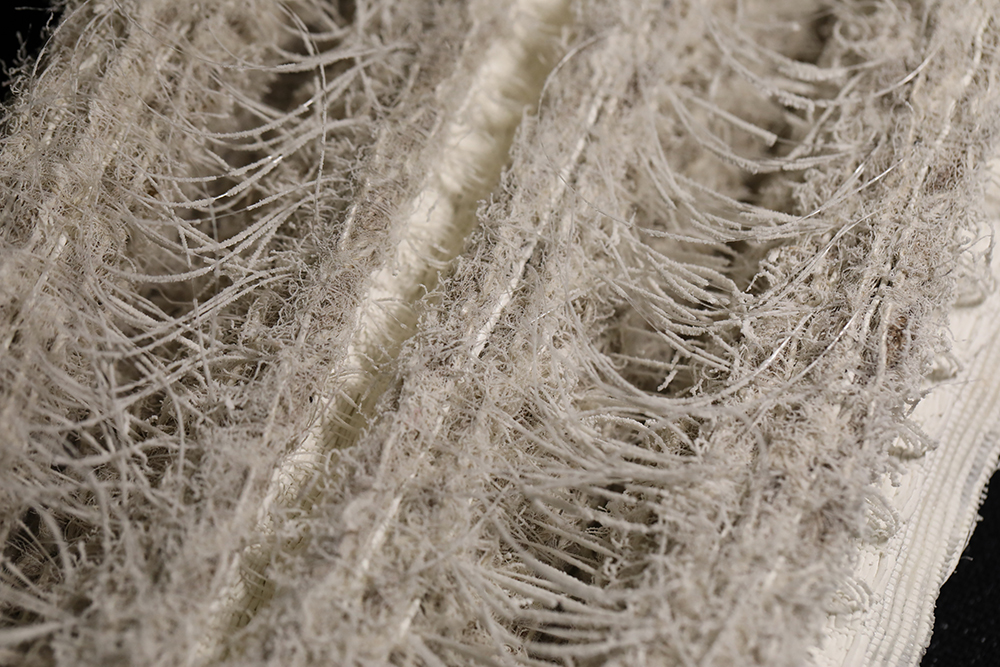
A series of jute-based samples have been shaped according to various textile techniques including weaving, crocheting, stitching before being exposed to the biocalcification process. This treatment was developed over 3 days, consisting first into the soaking of the textiles with calcite-secreting bacteria and secondly another bath with the complementary compound to induce the calcification. Through this process, the samples are not only hardened but also acquire a white finishing recalling stalagmite textures. From these hands-on experimentation a series of design proposals were developed, suggesting a variety of design-led applications and perspectives such as: bioreceptive domestic structures, urban furniture, crocheted vernacular architectures, stitched architectural ornaments and modular mashrabiya.
Students: Juliette Clapson, Mélanie Dhubert Riollet, Nina Dos Santos, Jeanne Guillet, Maude Guirault, Violette Husson, Victor Manceau, Arnaud Mazel, Chloé Ménard, Oscar Nahan.
Coordination & facilitation: Aurélie Mosse
Teaching team: Bastian Beyer, Daniel Suarez, Aurélie Mosse
Scientific partners Annette Esnault-Filet, Leslie Sapin from Soletanche-Bachy
Funding The course benefited of the respective support of I-Portunus Houses pilot scheme*, Soletanche Bachy, Ecole des Arts Décoratifs and the Matters of Activity cluster, Humboldt University (10k€).
Related publications
- Mosse, A., Zamora, D.S., Beyer, B., 2024, ‘Towards a Bacterially-Induced Textile Architecture’, In: Thomsen, M.R., Ratti, C., Tamke, M. (eds) Design for Rethinking Resources. UIA 2023. Sustainable Development Goals Series, pp.47-63, Springer, Cham.
- Granja, C., 2023, Design textile: des bactéries sans un pli, Libération, Nous! Le vivant: éclairage, 22 septembre 2023.
- MoA, 2022, Materials of the future, April 2022.
- I-Portunus, 2022, Ecole des Arts Décoratifs, stories.
* I-Portunus Houses pilot scheme is implemented, on behalf of the European Commission, by a consortium of organisations that have been pioneers of European cultural mobility programmes themselves. Coordinated by the European Cultural Foundation (Amsterdam), the i-Portunus Houses consortium involves MitOst (Berlin) as main mobility implementer and the Kultura Nova Foundation (Zagreb) as lead in evaluation and analysis.
A 6-week project developed in collaboration with the architectural agency SCAU in the framework of the materiality futures course, 1st year MA Textile & Material Design in 2019.
In dialogue with the architecture.s in which it is inserted, students explored which roles textiles can play in the design of places for the elderly. The focus was especially on how textile design can deal with the relationship patients have with their memory, the question of intimacy and being at home, the loss of landmarks and disorientation. Three proposals were developed by groups of 2-3 students, ranging from a deployable textile hut to welcome relatives to a design kit supporting inclusive decoration for people with visual deficiency, including the design of an entrance space with poetic and transitional qualities for residential care for senior citizens.
students: Astrid Commeigne, Lucie Maine, Marine Montiel, Elise Ory, Nicolas Quet, Lou Ramage, Sophie Zampieri
Coordination: Aurélie Mosse
Teaching team: Jean-François Bassereau, Aurélie Mosse, Eric de Thoisy
Partners: the architectural agency SCAU
Related publication
- SCAU, 2019. « Lieux de vie[ux] », workshop SCAU architecture / ENSAD, 30 avril 2019
a 6-week project in collaboration with CITA, Royal Danish Academy, in the framework of the 2021 « matérialités futures » course, 4DTM, Ecole des Arts Décos
Building on the Imprimer la lumière research project, this course asks how architects and designers can work with bioluminescent micro-organism to develop biosourced materials informed by 3D printing for an architectural context. Bioluminescence is a chemical form of light produced by many marine organisms, some insects and mushrooms. While bioluminescent genes are used as markers in biology and medicine, recent experiments in the biodesign community have explored bioluminescence as an alternative to public and domestic lighting or as prospective garment finishing. By learning how to grow luminescent bacteria and investigating how they can be appropriated through 3D soft structures, primarily 3D printed, students questioned and explored both conceptually and materially how bioluminescent bacteria can be part of a strategy for a living architecture underpinned by 3D printing.
Students: Laura Bartier, Ines Bel Mokhtar, Maty Biayenda, Coraline Chancibot, Lisa Grand, Chloé Hercé, Alyssa Jos, Minji Koo, Julie Lagarde, Alexandra Lenartowicz, Eléonore Pierrard, April Saint-James
Coordination: Aurélie Mosse
Teaching team: Tony Jouanneau, Aurélie Mosse, Mette Ramsgaard Thomsen, Martin Tamke, Guro Tyse
Support: EUR ArTeC, Olivier Bienz, CITA
Related publication:
- Ramsgaard Thomsen, M., Tamke, M., Mosse, A., Sieder-Semlitsch, J., Bradshaw, H., Fabritius Buchwald, E., Mosshammer, M., 2022, ‘Imprimer la lumière: 3D printing bioluminescence for architectural materiality’, In: Yuan P.F., Chai H., Yan C., Leach N. (eds) Proceedings of the 2021 DigitalFUTURES. CDRF 2021. Springer, Singapore.
A 2-weeks workshop for Ensad textile design master students, 1st year MA in the context of the « nouveaux savoir-faire » course in 2020.
A major stake of the ecological transition goes by the need to develop new modes of production in order to build more circular models, no longer generating waste. Yet, paper constitutes an emblematic waste deposit of the post-industrial society. Reaching ¾ of waste production in office activities, paper is in this context only recycled up to 25% except archiving, even though it can easily find another life after use.
Combining conferences and hands-on exercices with a more personal phase of creation and appropriation, this course aimed at initiating students to circular design through the up-cycling of paper waste. It investigated more specifically the form-finding potentials offered by a foam made from paper waste, recently patented in the framework of the Cardepar research project and allowing to replace the traditional foam board’s core, -derived from oil- with a recyclable and biodegradable alternative. As such, students have explored new ingredients, questioned new form-finding process, new sensory properties uses for this foam.
Students: Laura Bartier, Ines Bel Mokhtar, Maty Biayenda, Coraline Chancibot, Alyssa Jos, Minji Koo, Julie Lagarde, Alexandra Lenartowicz, Eléonore Pierrard, April Saint-James
Programing & coordination: Aurélie Mosse
Teaching team: Jean-François Bassereau, Aurélie Mosse with the participation of Justine Laurent (Circulab), Céline Monteux (ESPCI), Elisa Zeno (Centre Technique du Papier).
A 6-weeks collaboration with WAAG’s textile lab, Amsterdam for Ecole des Arts Déco textile design master students in the context of the « matérialités futures »‘ course in 2018.
Students explored by groups of two the potential of microbiology for the development of more sustainable textile concepts, processes and outcomes. By learning how to produce colours from bacteria and investigating how materials such as kombucha or mycelium leather can be grown, they questioned and explored the design opportunities and constraints offered by these microbiologically produced substances for the expansion and renewal of the textile industry.
Students: Alice Billaud, Blandine Fournet Desesquelle, Miléna Gateau, Ella Guarrigue, Anaïs Hervé, Jeanne Tazartez, Emy Tsaï, Quiterie de Visme
Coordination: Aurélie Mosse
Teaching team: Jean-François Bassereau, Ista Boszhard, Aurélie Mosse, Cecilia Raspanti
Partners: Ista Boszhard, Cecilia Raspanti, Textilelab, Waag, NL
A 2-weeks workshop with Maurin Donneaud for Ensad textile design master students
This workshop was developed in 2017 and 2018 in the framework of the « new know-how » course. It aimed at initiating students to the design of electronic textiles. The teaching focus was on an introduction to the Arduino programming software, the fabrication of soft e-circuits and a personal but guided phase of conception and prototyping. In 2018 , the workshop had a more specific focus on light-emitting textiles underpinned by actuators such LEDS, optic fibers or El-Wire.
A 5-weeks collaboration with the architectural agency SCAU, Paris for Ensad textile design master students in the context of the « matérialités futures’s course ».
From the Atrium, the future library of the Montpellier University of Letters imagined by SCAU, students explore of how self-actuated textiles can take in charge the most ephemeral and evolving part of architectural temporalities: thermal comfort, personalization of spaces and ambiences, more virtuous integration of innovation cycles and of their obsolescence, contribution to visual, olfactive, acoustic comfort, reduction of the energetic consumption of the building.

